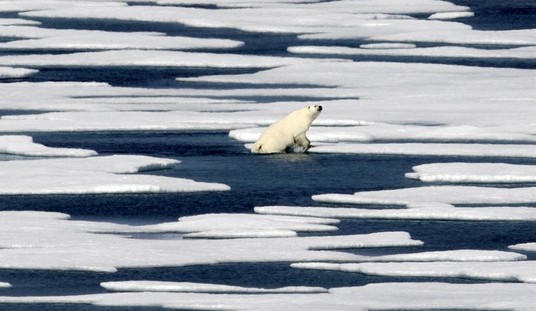You can claim that we’re facing an all-hands-on-deck existential crisis on the scale of World War II such that every last measure to reduce carbon emissions must be taken — including nuclear power, which countries like France use extensively without major incident.
Or you can argue that nuclear power is sufficiently risky that we can and should eschew it because the climate crisis, while pressing, doesn’t pose as great a risk to mankind as another Chernobyl does.
But you gotta choose. Pushing a plan like the Green New Deal that would spend $93 trillion to remake how the United States consumes energy in nearly every particular while carving out a special exception for a type of clean energy that famously produces no emissions doesn’t compute. It’s like endorsing a massive climate-change reform plan and then, once it’s brought to a vote on the Senate floor, voting “present” because the politics are too dodgy.
Is this an existential crisis or isn’t it? Because if, coincidentally, the crisis only demands solutions that you’re ideologically comfortable with, maybe your assessment of the gravity of it isn’t as trustworthy as it should be.

How can we take them seriously?
If you’re wondering whether the party’s loudest alarmists on climate change might be more amenable to nuclear power than the average Democrat is in the interest of fighting climate change with any weapon to hand, the answer is no. The Green New Deal explicitly rules out adding more nuclear power while endorsing more practical solutions like, ah, retrofitting every building in America to make them more energy efficient. Had the proposal been less ambitious, that might have been understandable: New reactors are expensive and take time to build. Since, however, it’s offering arguably the most ambitious policy program in modern American history, feasibility concerns are hard to take seriously.
It must be a safety thing. But according to the head of the Reactor Physics Design & Analysis department at Idaho National Laboratory, those fears are exaggerated:
After more than two decades spent analyzing available data, experts from institutions such as the World Health Organization and the United Nations Environment Program, concluded that 43 people died of causes directly attributable to the Chernobyl accident. They also indicate a potential 3 percent increase in cancer mortality in the 600,000 most exposed people. In such a large population, unfortunately, more than 120,000 lethal cancers are expected to occur spontaneously—independently of any radiation exposure—and the Chernobyl accident may add 4,000 cases to this macabre toll. However, a long standing issue associated with this predicted increase is that it cannot be verified with certainty because it is much smaller than—and mostly undistinguishable from—the background of spontaneous cancers. The same organizations have been involved in the assessment of the consequences of the Fukushima accident; the consensus is now that cesium and iodine—the two most troublesome elements—releases were no more than, respectively, one-half and one-fourth of those of Chernobyl. No one was killed by the radiations and no long term effects are expected among the evacuated people. However, for both Chernobyl and Fukushima, the main concern is related to the clean-up of the areas which were contaminated with radioactive materials. It can take decades and cost billions of dollars to ensure that the residual level of radiation is low enough—comparable to the level of natural radiation—for the population to move back.
The statistics regarding the effects of air pollution—a problem that nuclear helps lessening—is useful. A recent publication from the World Health Organization states that “outdoor air pollution in both cities and rural areas was estimated to cause 3.7 million premature deaths world-wide in 2012.” The International Agency for Research on Cancer also announced recently that “it has classified outdoor air pollution as carcinogenic to humans” and that “the most recent data indicate that in 2010, 223,000 deaths from lung cancer worldwide resulted from air pollution.”
Even if the fears weren’t exaggerated, how could anxiety about a new Chernobyl outweigh anxiety about a global climate-change cataclysm? A core defense of the Green New Deal is that, although certain sacrifices will be painful, it’ll be less painful to drastically change our way of life than to continue onward blithely toward global-warming armageddon — except, somehow, when it comes to new nuclear power. The pain involved in incurring the risk of a meltdown is somehow the greatest pain of all.
Here’s AOC yesterday trying to show how much she cares. Answer: Not enough to do obvious things of which her base disapproves that are nonetheless highly effective in reducing emissions.
“People are dying!” Rep. Alexandria Ocasio-Cortez delivered a passionate rebuke after a Republican congressman mocked the "Green New Deal" as nothing more than an elitist fantasy https://t.co/acdaQt16Ji pic.twitter.com/Kbfiw9Tnb2
— CNN Politics (@CNNPolitics) March 27, 2019








Join the conversation as a VIP Member